I test laptops for a living — and these are the 6 best for students right now
Books, snacks, and one of these 6 laptops — your college checklist is sorted
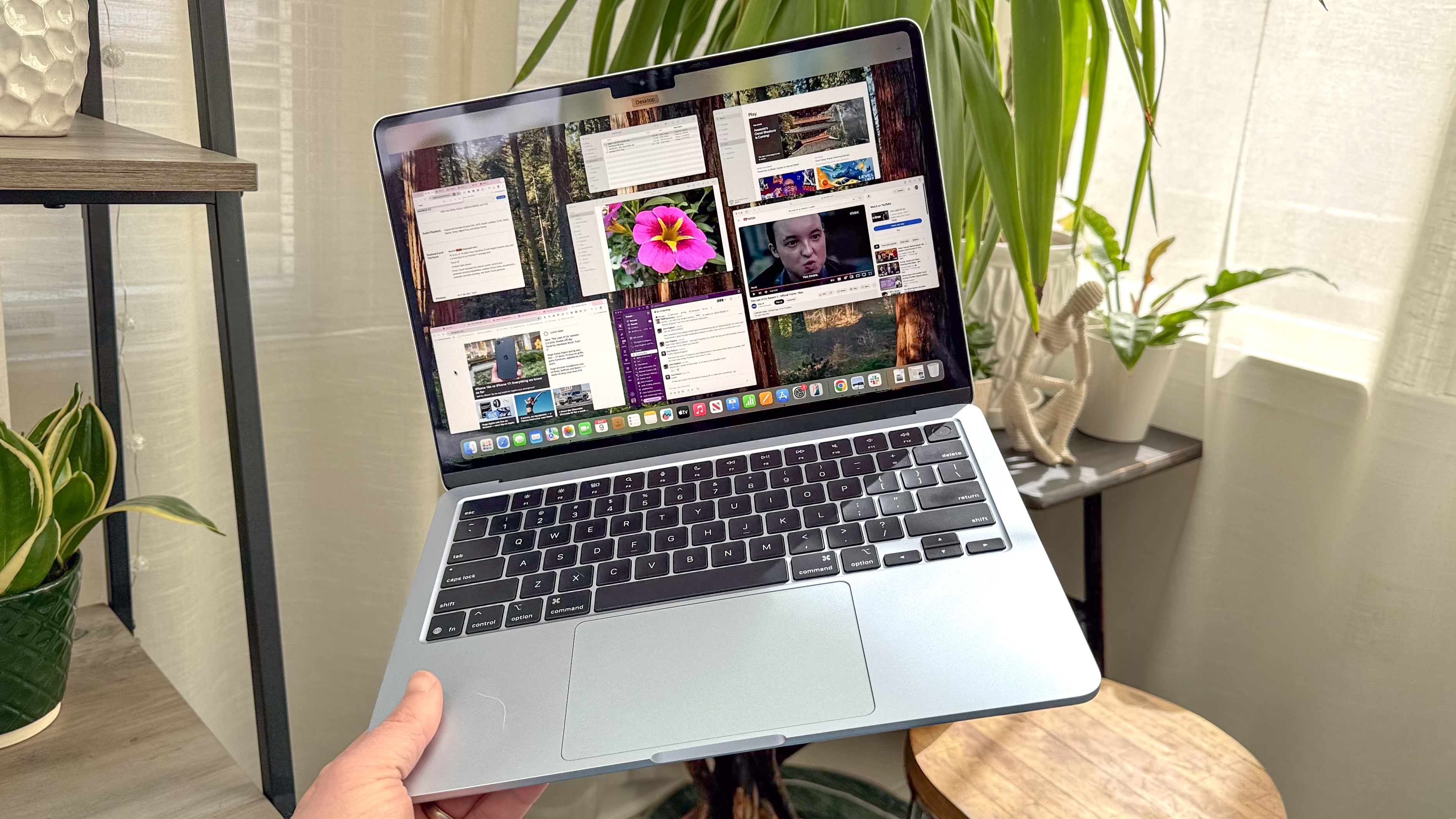
Back-to-school season means one thing: it’s time to swap out summer brain for study brain. Whether you’re a note-taking machine, a late-night Netflix binger, or someone juggling both while pretending to understand your schedule, a great laptop can make or break your college flow. But with so many options out there, finding the right one can feel like cramming for a final you forgot was happening.
Good news. I’ve done the homework for you. I tested a ton of laptops and picked out six that are perfect for student life, whether you’re on a budget, need something featherlight for running between classes, or want enough power to tackle video edits or code. These are the laptops I’d personally recommend to anyone headed to campus or just back to their bedroom Zoom setup. Let’s find your next digital sidekick.
The quick list

The MacBook Air M4 is my go-to recommendation for students. It strikes the perfect balance — the new M4 chip delivers impressive performance, the screen is bright and sharp, and the battery easily lasts close to 15 hours. All of that is packed into a slim, lightweight design that’s effortless to carry between classes.
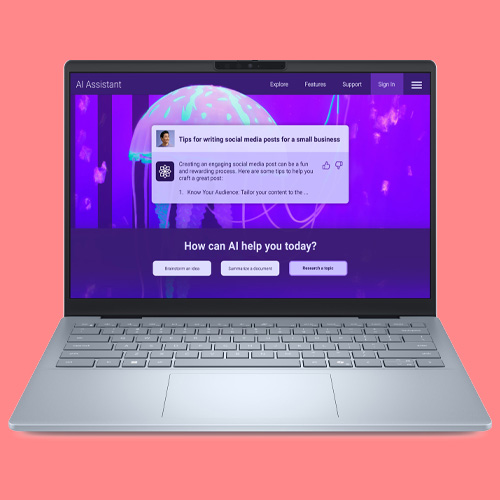
The Dell 14 Plus kind of came out of nowhere for me. On the face of it, it just looks like every other laptop, but then here it goes outperforming systems nearly double the cost of it with a long battery life and strong value for money at $699. This is a seriously good machine for your studies.

If your course is a creative one, it's no contest — the M4 MacBook Pro is the way to go. That M4 chip is a screamer in video and photo editing apps with an advanced media engine and GPU, while that 18-hour battery life ensures worry-free stamina no matter how long you're away from a charger on campus. Plus, those speakers have good room-filling sound for those times you need to turn up on the dorms.
How do I pick the best laptop for my studies?
Why you can trust Tom's Guide
Good question, and I'm here to help! There are certain key factors that make a laptop amazing for heading back to school.
- Design & Ergonomics: A student laptop needs to be both portable and durable. Look for a great keyboard for late-night essays and a large, precise trackpad.
- Performance & Battery Life: Nothing's worse than a laptop freezing up before a deadline. Aim for a powerful processor like an Intel Core Ultra 5 200 series, AMD Ryzen AI 300, Snapdragon X, or Apple's M3/M4 for speed and reliability.
- Screen & Speakers: A bright, sharp screen is great for both getting work done and relaxing with a show. Look for at least a 1080p display with 500 nits of brightness.
- Connectivity: Wireless and wired connections are essential. Make sure you have Wi-Fi 6 and Bluetooth, along with a few USB-C ports and a headphone jack for all your accessories.
- Operating System: This comes down to personal preference, but always double-check if your essential software is compatible with Windows, macOS, or ChromeOS before you buy.
- Price: Don't get a cheap system that will let you down. Start with a budget of at least $600 to ensure you get a durable, high-performing laptop that will last you all four years.
Of course, this is my selection of the best laptops for most students. But I totally understand that there are some courses that require more horsepower than these choices. If you're using AutoCAD more than Google Docs, check out our picks of the best laptops for engineering students.

I've been reviewing laptops for over a decade, so I know a thing or two about what makes for a great buy for students heading off to college. Picking the right one for your studies is a huge decision, as it will be your daily driver for the next few years and you need that perfect mix of performance, power efficiency and reliability. I can help you find that!
The best college laptops you can buy right now
The best overall
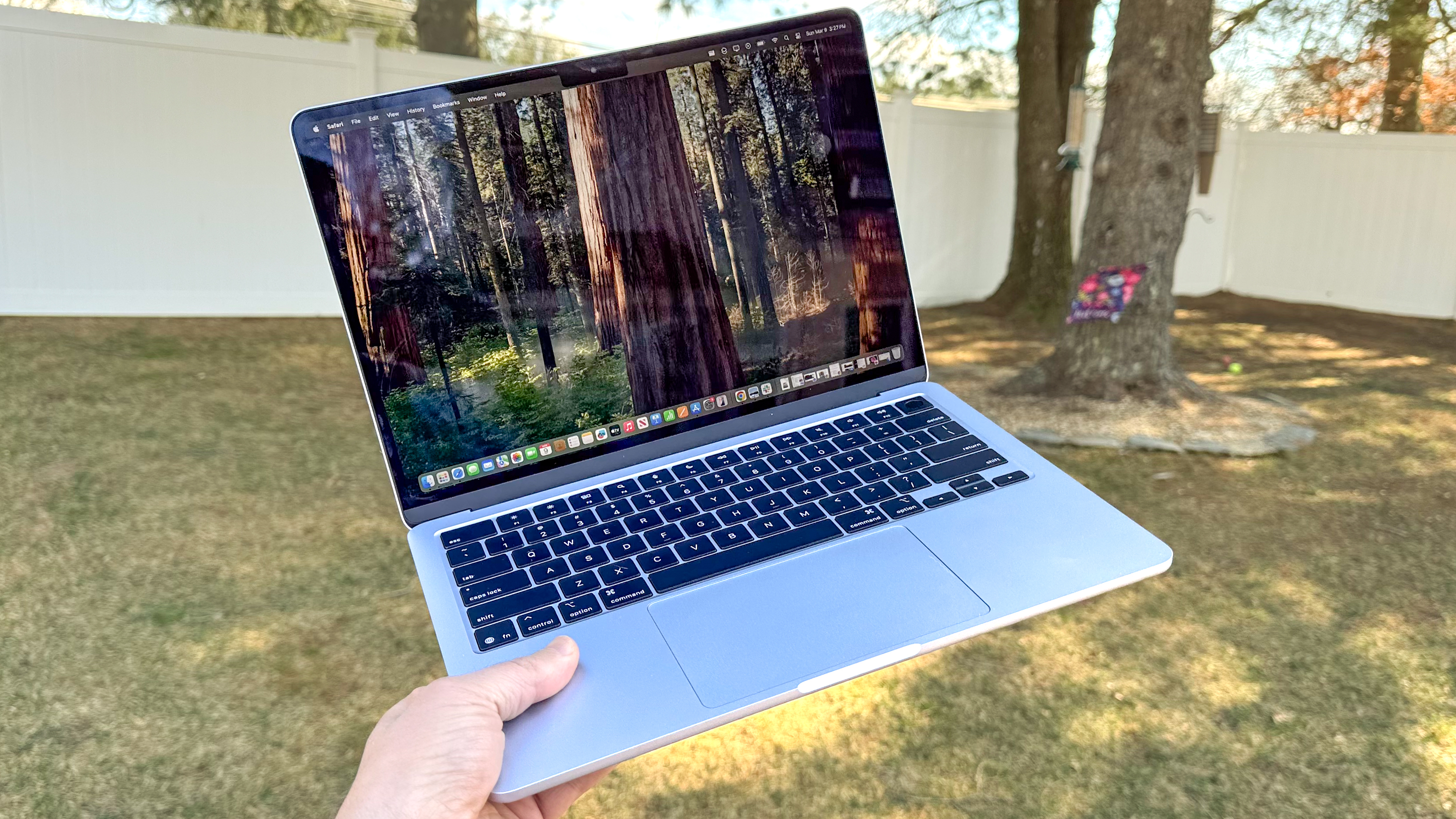

Specifications
Reasons to buy
Reasons to avoid
Think of the M4 MacBook Air as a glow-up of everything that already worked — but with more power and a lower price tag. For $100/£100 less than before, you’re still getting the same premium aluminum design, now even sleeker in that gorgeous new blue finish. It’s light enough to carry all day at just 2.7 pounds, and slim enough to slide into any backpack without a second thought.
The real star is the upgraded M4 chip. It flies through multitasking, whether you’ve got lecture notes, Spotify, and 15 Chrome tabs open or you’re diving into 4K video editing in Premiere Pro. And with that bright, color-accurate Liquid Retina display, everything from spreadsheets to design work looks great. It’s the ultimate back-to-school laptop for students who want power without bulk.
| Row 0 - Cell 0 | Single core | Multi-core |
MacBook Air M4 | 3751 | 14947 |
MacBook Air M3 | 3082 | 12087 |
MacBook Pro M4 | 3807 | 15114 |
Dell XPS 13 (Snapdragon X Elite) | 2797 | 14635 |
Lenovo Yoga Slim 7i Aura Edition (Intel Core Ultra 7) | 2531 | 10711 |
Acer Swift 14 AI | 2426 | 11379 |
If your college days are anything like mine were, you’ll be hopping between classes with zero time to hunt for a power outlet — and the 13-inch M4 MacBook Air has your back. It lasted just under 15 hours in our battery test, which means true all-day performance. Combine that with the smooth experience of macOS for tackling work and unwinding with games or Netflix, and you’ve got what I’d call the best all-around laptop for most students.
Read our full Apple MacBook Air M4 (2025) review.
The best value


Specifications
Reasons to buy
Reasons to avoid
Look, I’m not going to pretend the Dell 14 Plus is the hottest laptop on campus — it’s more “sturdy study buddy” than style icon. But after using it for a month, I can say this: it just works. No drama, no fuss. It’s the kind of laptop that fades into the background while you focus on deadlines, group projects and yes, the occasional YouTube rabbit hole between lectures.
What makes it such a great pick for students is the value. It starts at just $699, and for that you’re getting some legit specs — like Intel’s new Core Ultra 7 chips and a crisp 2.5K display. Typing on the keyboard feels good, the trackpad is reliable, and there’s a solid mix of ports for whatever gear your major throws at you.
It’s not without flaws. The plastic build has some flex, and the screen could be brighter if you’re working outside. And yes, the M4 MacBook Air might be the better machine overall. But if you want a dependable, long-lasting Windows laptop that can handle back-to-back classes, research papers and a little Netflix on the side — the Dell 14 Plus is a quiet overachiever worth considering.
Read our full Dell 14 Plus review.
The best for creatives
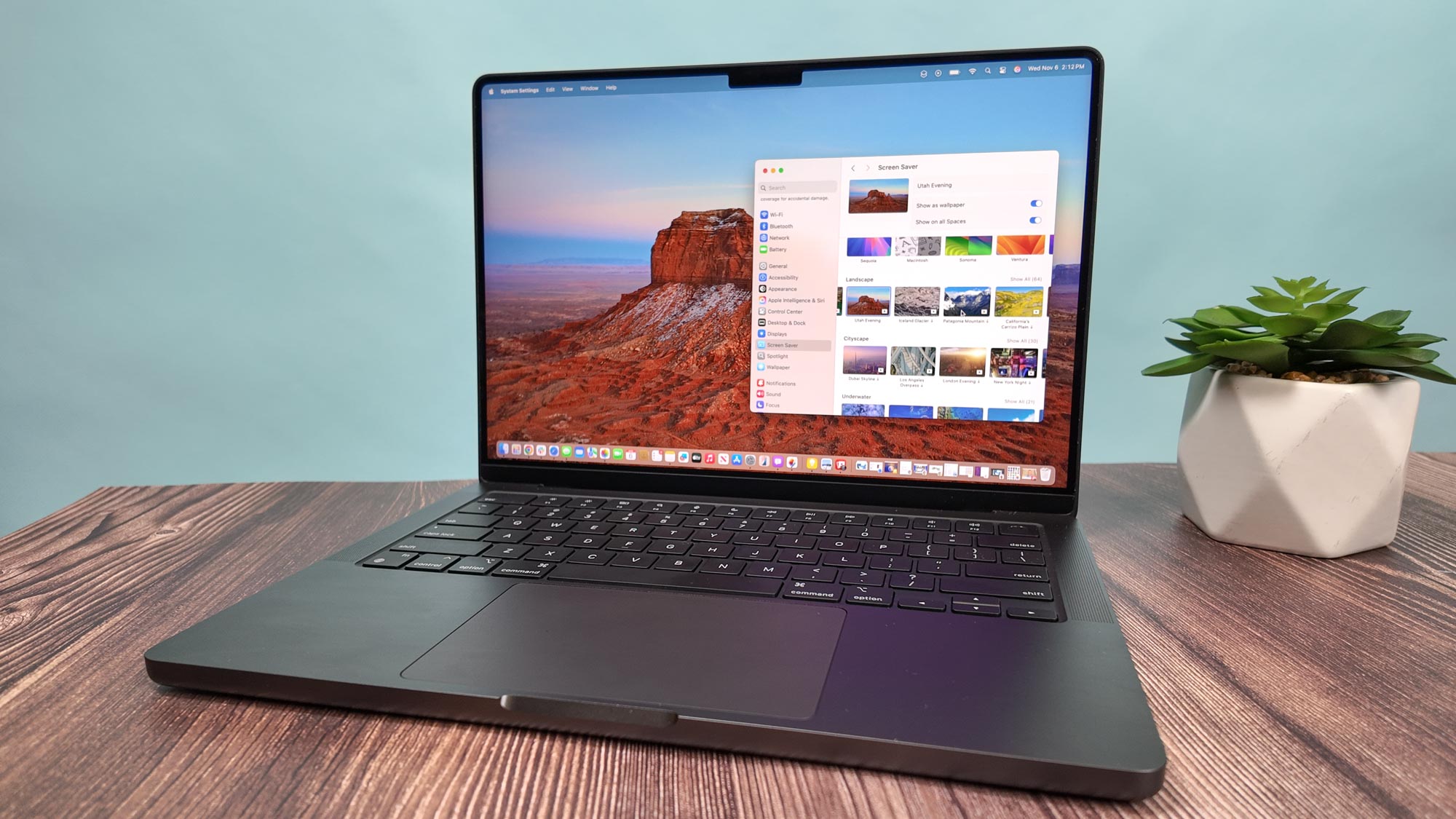

Specifications
Reasons to buy
Reasons to avoid
If you’re looking at a MacBook for college, the 14-inch MacBook Pro with the base M4 chip is probably the sweet spot. It’s got more than enough power for creative work — whether you’re editing 4K video, building out a design portfolio, producing music or touching up photos for a project. I’ve used it for some pretty demanding tasks, and it breezes through apps like Photoshop without breaking a sweat.
Sure, you could go for the pricier M4 Pro model if you’re deep into animation or compiling massive codebases — but honestly, most students don’t need that much muscle. The standard M4 gives you that perfect balance of performance and efficiency without tipping into overkill territory. It’s powerful, portable and more budget-friendly than you might think for what you’re getting.
| Row 0 - Cell 0 | Photoshop (Score/Time) | Premiere Pro |
MacBook Pro M4 | 10,542 / 11.74 min | 4,618 / 6.13 min |
Dell XPS 13 (Snapdragon X Elite) | 6,150 / 18.02 min | N/A |
Dell XPS 13 (Intel Lunar Lake) | 6,702 / 17.7 min | 2,816 / 8.83 min |
Asus ProArt PX13 (AMD Ryzen, RTX 4050) | 7,948 / 18.32 min | 7,074 / 4.70 min |
Creative students, you’re covered. The 14-inch mini-LED Liquid Retina XDR display on this MacBook Pro is a stunner — brighter, sharper and more color accurate than before. Your RAW photo edits, Illustrator projects and video timelines will all look exactly how they’re supposed to. And if you go for the nano-texture glass upgrade, say goodbye to annoying reflections in class or the library.
It’s also super practical. There’s a full-size SD card slot for transferring projects, a buttery-smooth keyboard and touchpad for hammering out assignments, and over 18 hours of battery life to get you through even the longest studio days. This MacBook doesn’t just look good — it’s built to keep up with whatever your creative workload throws at it.
Read our full MacBook Pro 14-inch (M4, 2024) review.
The best Windows laptop for students


Specifications
Reasons to buy
Reasons to avoid
The Lenovo Yoga Slim 7x might just be the sleeper hit of the new school year. It’s Lenovo's premiere Snapdragon X Elite laptop, and while it wears the familiar “Yoga Slim” name, this is a completely fresh design that feels built for life on the go. It’s super lightweight, the aluminum chassis feels premium, and it has the kind of sleek, modern look that fits right into any campus setup — whether you’re cranking out assignments or binging in bed.
Now, battery life isn’t class-leading for a Snapdragon laptop, but it still outlasts most Windows machines I’ve used. And when paired with snappy performance and a stunning 14.5-inch OLED display, it’s easy to forget you’re not using something twice the price. The screen is especially awesome — rich contrast, punchy colors, and a smooth 90Hz refresh rate that makes everything feel extra fluid. The touchscreen and 16:10 aspect ratio are great too, especially for multitasking between lecture notes, research, and the occasional YouTube spiral.
There are a couple of caveats to keep in mind. The AI features sound impressive on paper, but right now they don’t really do much to justify the hype. Some older apps may still have issues running on Windows for Arm, and the lack of a headphone jack is definitely annoying. But overall, the Yoga Slim 7x is a strong pick for students who want premium performance and portability without paying Apple-level prices.
Read our full Lenovo Yoga Slim 7x review.
The best gaming laptop for students
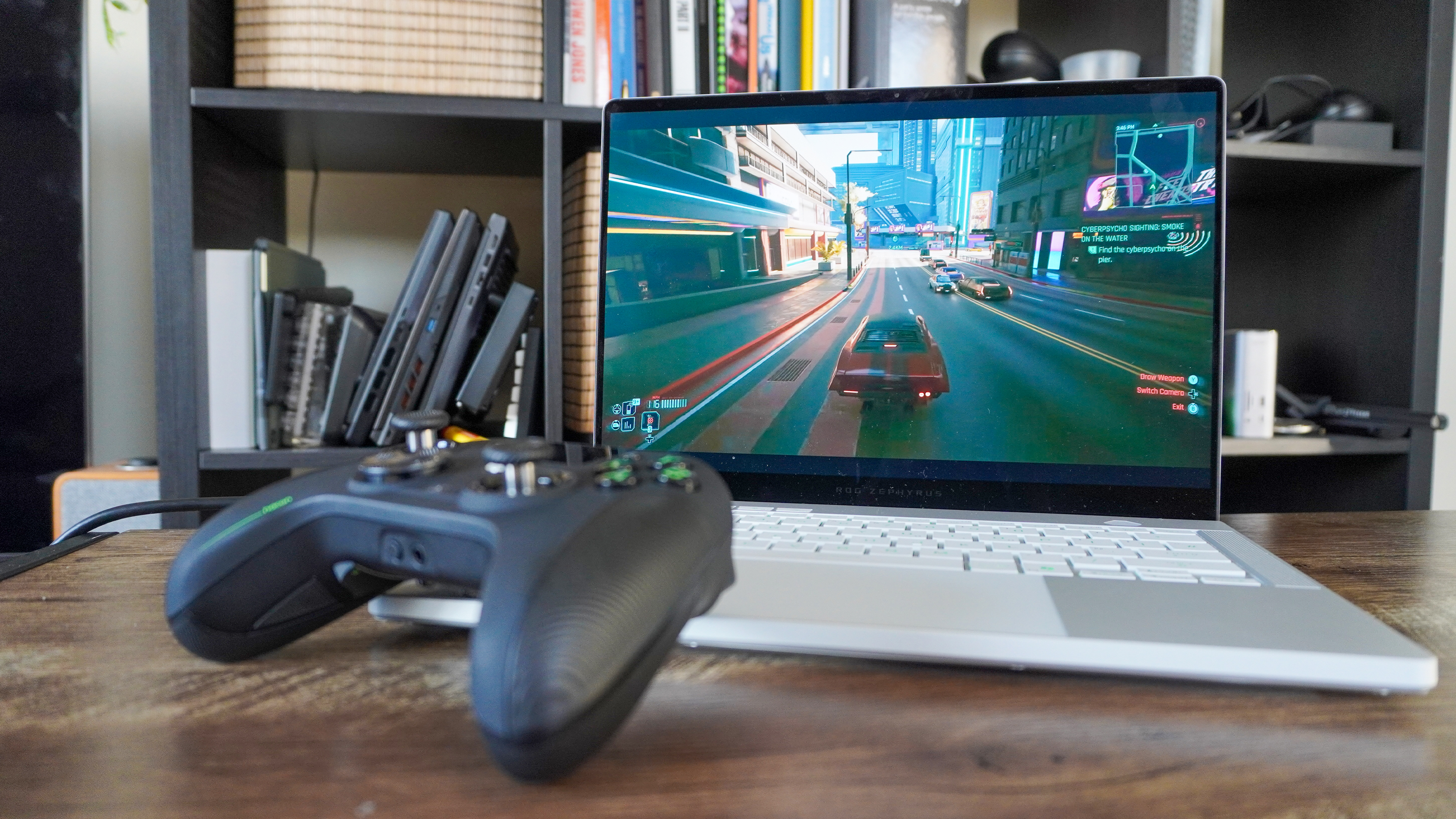

Specifications
Reasons to buy
Reasons to avoid
I took the new Asus ROG Zephyrus G14 with me on a 5,000-mile trip, and by the time I fired up Cyberpunk 2077 and saw that buttery-smooth OLED in action, I already knew this would be the gaming laptop I’d recommend to every student who games as hard as they study. Whether you’re in a dorm or on the move, this machine hits that sweet spot between power and portability.
The design is still as sleek as ever — that precision-milled aluminum chassis gives off strong MacBook Pro energy, and the keyboard and glass touchpad feel premium under your fingers. But it’s what’s inside that really impressed me. Asus upgraded the internals with an AMD Ryzen AI 9 HX 370 and up to an Nvidia RTX 5080, which means you’re not only crushing AAA titles at high frame rates, but also flying through creative workloads and class projects without a hitch.
Battery life is still a bit of a weak point, so you’ll want to be near an outlet if you’re gaming during downtime. But that’s true of most gaming laptops. The difference here is that the G14 actually feels portable, not like you’re lugging a tank around campus. It’s a laptop that respects your backpack space and delivers serious power for both work and play — and for students juggling both, that’s a big win.
Read our full Asus ROG Zephyrus G14 (2025) review.
The best Chromebook for students
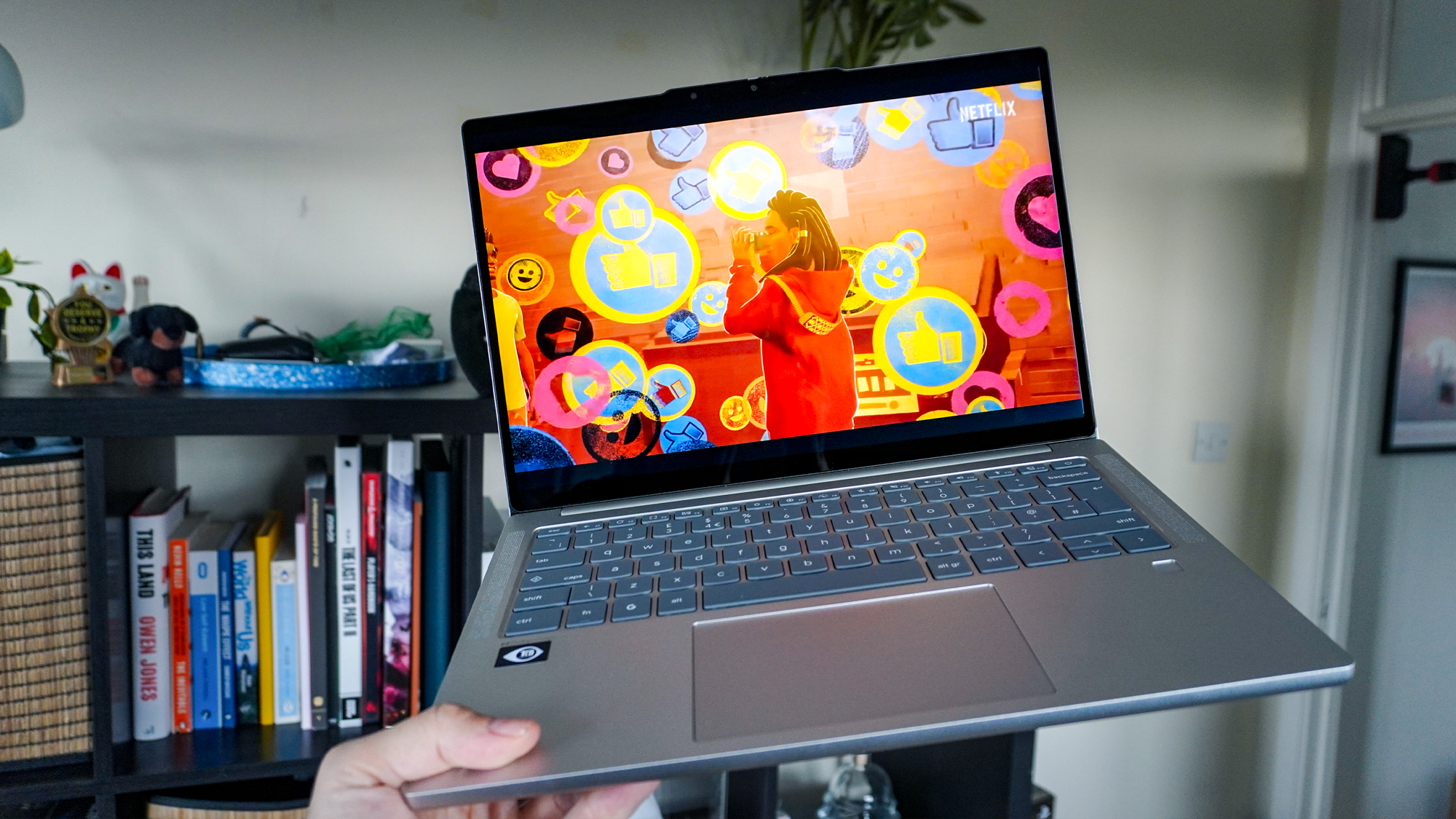

Specifications
Reasons to buy
Reasons to avoid
When I ditched my MacBook for the Lenovo Chromebook Plus 14 to review it, I was stunned. Chrome OS has well and truly come into its element as a really effective study buddy for your courses, and the 12 months free Google AI Pro can really work effectively alongside you to help you nail that college degree (more on that later).
First, there's the laptop itself — a gorgeously premium aluminum shell that packs the stellar ergonomics that Lenovo is known for with a tactile keyboard and smooth touchpad (and a touchscreen if you pay for it). Speaking of screen, that OLED display is mesmerizing for work and play, and those speakers get loud for those times you need background music in the dorm room!
Then we turn our attention to the performance and power efficiency, which far outstrips any other Chromebook thanks to that MediaTek Kompanio Ultra 910 chipset and 16GB of RAM. No matter how many Chrome tabs you open, this never stutters, and you've got worry-free battery life all day.
Throw in the aforementioned AI features that enrich your studies with Gemini 2.5 Pro to be a capable research assistant, NotebookLM being a lifesaver for pooling resources around big pieces of coursework, and generative AI giving you laughs around Veo 3 video and Imagen pictures, and you've got a fantastic system for your time at college.
Read our full Lenovo Chromebook Plus 14 review.
Battery benchmarks: comparison
Battery life is a key concern for students since you don't want a laptop dying in the middle of class. With that in mind we've collected all the results from our battery tests of these laptops, and I've organized them below in a brief chart.
As you can see, Apple's MacBook Pro is the current clear winner of terms of long battery life.
Laptop | Battery life (tested) |
M4 MacBook Pro | 18:31 |
M4 MacBook Air (13-inch) | 14:51 |
Lenovo Yoga Slim 7x | 14:14 |
Dell 14 Plus | 13:24 |
Lenovo Chromebook Plus 14 | 13:19 |
How we tested these laptops
To find the best laptops we run every machine through a rigorous suite of benchmarks and real-world tests to gauge how it will perform during everyday use.
We measure the average brightness and color quality of each laptop's display using our in-house light meter and colorimeter. For general performance, we run our machines through tests that include Geekbench 6 (CPU performance), as well as various 3DMark tests to measure graphics capabilities. We also run a file transfer test to measure how fast a machine's hard drive is, and a custom battery test that has the machine browse the internet over Wi-Fi until it runs out of juice.
Plus, we run the graphics benchmark test in Sid Meier's Civilization VI: Gathering Storm to get a sense of how well a laptop can handle basic games. When testing dedicated gaming laptops, we run benchmarks for a number of games such as Shadow of the Tomb Raider and Far Cry: New Dawn.
For more granular detail on our lab benchmarking and real-world testing, you can see how Tom's Guide tests every single laptop, PC and tablet.
Get instant access to breaking news, the hottest reviews, great deals and helpful tips.

Jason brings a decade of tech and gaming journalism experience to his role as a Managing Editor of Computing at Tom's Guide. He has previously written for Laptop Mag, Tom's Hardware, Kotaku, Stuff and BBC Science Focus. In his spare time, you'll find Jason looking for good dogs to pet or thinking about eating pizza if he isn't already.
